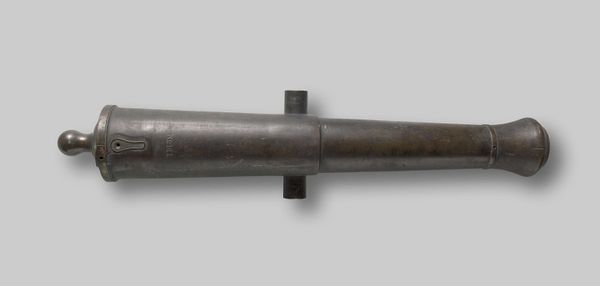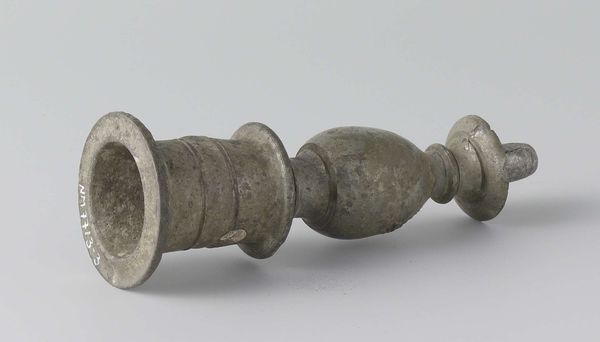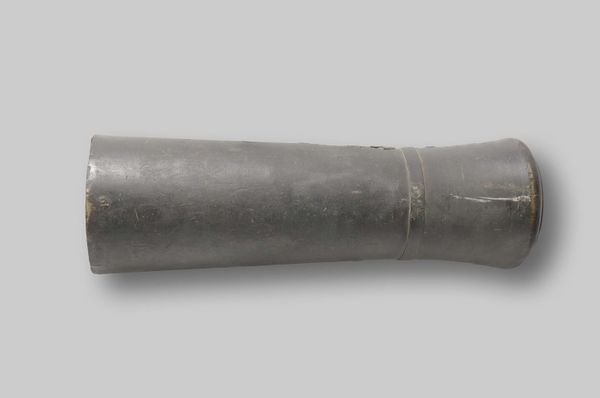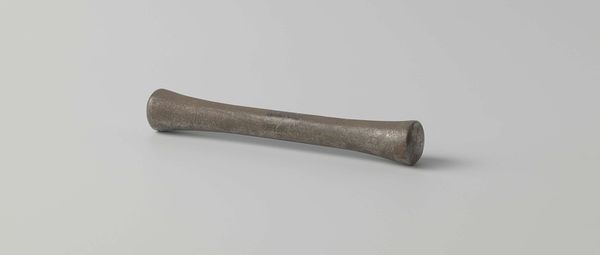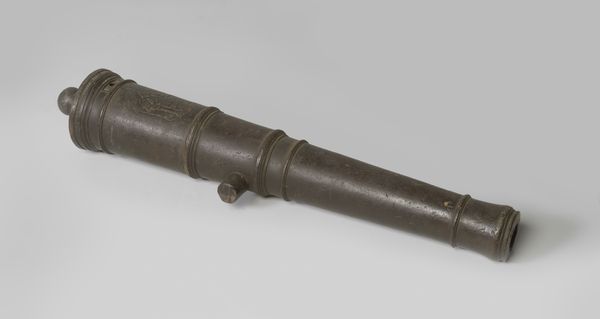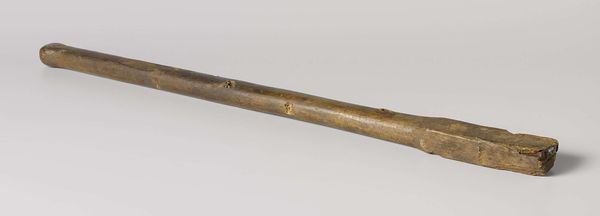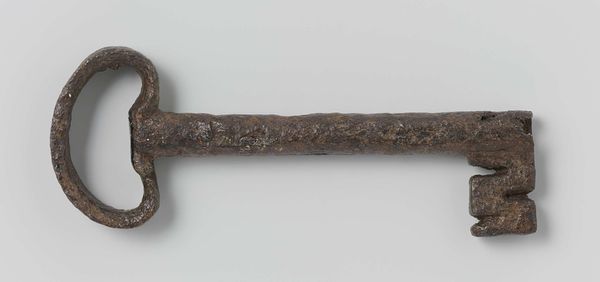
metal, bronze, sculpture
#
baroque
#
metal
#
bronze
#
sculpture
#
history-painting
Dimensions: length 122.5 cm, length 14 cm, length 108.5 cm, diameter 56 mm, diameter 26 cm, weight 118.8 kg
Copyright: Rijks Museum: Open Domain
Editor: Here we have a bronze cannon, "Bronzen kanon VOC A(msterdam)", crafted in 1748 and currently residing at the Rijksmuseum. Its metallic surface looks aged, almost like a relic of a forgotten age. How do we interpret such a blunt instrument from today’s perspective? Curator: It’s easy to view this object solely through the lens of its utility, but consider its social and historical implications. The VOC, or Dutch East India Company, was a major player in global trade. Can you think about what underpinned its success? Editor: I suppose its power rested on its ability to use force? To protect its trade routes and colonies. Curator: Exactly. This cannon is a direct manifestation of that power dynamic. Reflect on who benefited from that power and at whose expense. Whose stories are silenced by its very presence? Editor: So, seeing this cannon isn't just about appreciating its baroque artistry but understanding its role in colonial exploitation? Curator: Precisely! We can examine this as an example of how technological advancements, like this cannon, propelled colonial projects, fundamentally shaping power structures and leaving a legacy of inequality. Where do we see the ripples of those inequalities today? Editor: That gives me a lot to think about. It's uncomfortable to realize how something seemingly inert can be a potent symbol of historical injustice. Curator: Indeed. Art, even functional art like this, urges us to engage with complicated histories, stimulating a conversation about justice and accountability across generations.
Comments
No comments
Be the first to comment and join the conversation on the ultimate creative platform.



